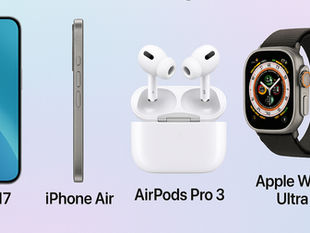
The Ubiquity of Facial Recognition: Can We Truly Evade Its Reach?
0
20
0
In recent years, facial recognition technology has become an integral part of our daily lives. From public surveillance cameras lining busy city streets to advanced security systems at airports, facial recognition is woven into various aspects of modern life. However, as this technology continues to evolve, it raises a critical question: can we truly opt out of its reach? The illusion of privacy seems to vanish the moment we step foot in public spaces, with many feeling uneasy about the implications for personal privacy and civil rights.
While some appreciate the added security that facial recognition brings, many are concerned about its impact on individual freedom and anonymity. This tension between security and privacy is more pressing than ever.
The Expanding Landscape of Public Surveillance
Public surveillance using facial recognition technology is no longer confined to high-security areas like banks or government buildings. Cities around the globe now employ cameras equipped with advanced facial recognition algorithms to identify individuals in real time. Research shows that 63% of U.S. adults live in areas where they are subject to constant surveillance.
Imagine enjoying a sunny day at the park. Would you want every smile shared with friends captured by prying cameras? For those who cherish their privacy, navigating public spaces has become increasingly daunting. Many find themselves pondering how they can truly remain anonymous in such a heavily monitored environment.

Homeland Security and Airport Facial Scans
Airports are another area where facial recognition technology has taken hold. Biometric scans streamline boarding processes, speeding up security checks and enhancing overall travel efficiency. For instance, a study revealed that travellers using facial recognition at one major airport experienced a 40% reduction in wait times, which many see as a significant advantage.
Despite these benefits, the extensive use of facial recognition raises serious concerns about traveler privacy. Airports gather enormous amounts of personal data, leaving many passengers wondering if their faces are being recorded indefinitely. How can we feel secure when our biometric data is potentially stored forever? This ongoing discussion strikes a balance between the need for safety and the demand for privacy.
The Everyday Presence of Biometric Systems
Facial recognition technology is deeply embedded in our everyday lives, influencing how we unlock our smartphones or complete transactions at the checkout. While the convenience of using facial recognition cannot be denied, it often leads individuals to unintentionally consent to having their biometric data collected.
Take payment systems like Apple Pay, which rely on facial recognition for quick transactions. Studies estimate that over 50% of smartphone users have opted into biometric features without fully understanding the implications. Without a clear comprehension of privacy policies, users can be left susceptible to data breaches. Opting out may restrict essential functions that have become integral to our daily routines.
The Threat to Personal Privacy
The omnipresence of facial recognition systems challenges notions of personal privacy. These technologies facilitate continuous tracking of individuals, often without their explicit consent. Instances of mistaken identity resulting from poorly trained algorithms can lead to wrongful accusations, causing distressing legal issues for innocent people. A 2021 report highlighted that black individuals were nearly 10 times more likely to be misidentified than their white counterparts by some facial recognition systems.
These ethical concerns amplify the challenges faced by those desiring to escape facial recognition's grasp. For many, the desire to opt out of these systems is complicated by the broader implications for marginalized communities.
Exploring Our Options for Opting Out
With rising concerns around privacy, many are seeking ways to reclaim their anonymity. While actively opting out of facial recognition may seem daunting, there are practical steps individuals can take to limit their exposure:
Avoid Public Spaces with Surveillance: Steer clear of densely populated areas known for high surveillance, opting for smaller parks or local venues instead.
Utilize Privacy-Enhanced Devices: Explore technologies designed to protect biometric data, such as privacy-focused phones or apps that limit data harvesting.
Individual actions, while valuable, are insufficient alone; a collective approach to privacy rights is essential in this landscape. Without comprehensive regulations and discussions surrounding surveillance ethics, safeguarding personal privacy may remain a formidable challenge.
A Call for Better Regulation
The rapid development and deployment of facial recognition technology highlight the urgency for robust regulations that protect individual rights in our increasingly monitored world. Currently, laws in many regions fall short of addressing the complexities surrounding facial recognition, leading to potential abuse and violation of privacy.
Policymakers must create comprehensive regulations focusing on responsible use of this technology. This includes implementing strict guidelines for data retention, mandating transparency regarding data usage, and requiring ethical standards in facial recognition deployments. Concrete actions can reinforce individual privacy in an era dominated by surveillance technology.
Moving Forward
As facial recognition technology becomes more pervasive, understanding and navigating our privacy rights is increasingly important. Opting out of this surveillance system may frequently be impractical, but advocating for ethical practices in its use is crucial.
By fostering public awareness and collective action, individuals can urge for regulations that prioritize privacy and transparency. The conversation is only just beginning, and it will take a concerted effort to maintain a space for privacy within a world increasingly shaped by facial recognition.







